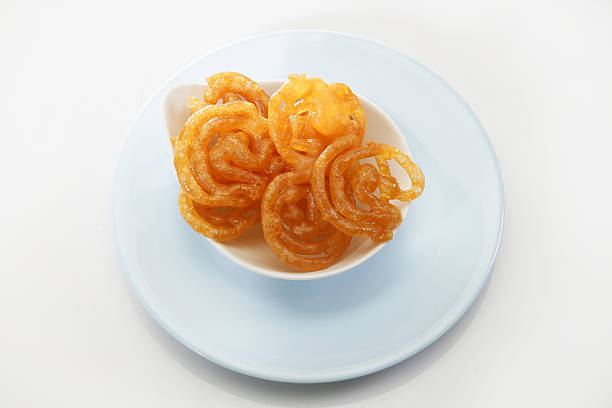When you say ‘jalebi,’ it is a way to bring back memories of the traditional Indian delicious sweet that is sticky, its spirals sitting in a syrupy splendor, and the fried rounds frying to an orange-golden hue. What if it were to be as appealing in a new color, like magenta or blue? Green jalebis are the color a recent viral article on social media has introduced us to. They’ve even been called mountain dew jalebis and have prompted experts to explain to us the reasons why we should try this delicious treat a shot.
Green jalebi also differs.
The process of making green jalebi is different from the preparation of regular jalebi. The beans are freshly shelled and soaked in water for a few hours, then remove their coat and grind the seeds that have been absorbed into a fine powder. Incorporate the paste from the beans and white flour (maida or all-purpose flour), creating a green color. The batter is fermented for about 4-5 hours. After that, pour it into molds for making jalebi and deep fry them to an attractive golden green. Then, soak the fried circular coils in a honey and sugar syrup mixture. The jalebis are crispy on the outside but soft and juicy inside. They have a slightly fruity flavor. They are distinct from the regular jalebis.
Jalebi is a food item that nutritionists have viewed.
“Typically we don’t eat sweets with any nutritional value. Instead, we think of the pleasure we get from eating them with the release happy hormones or neurotransmitters,”
In recent years there’s been an increasing trend of incorporating nutritious ingredients into traditional snacks and sweets, usually creating fusion-based creations.
“I can see [hyacinth beans or green jalebi] as a unique idea but not as a healthy option, as sweets are always high in carbohydrates and fats,
For instance, you can make halwa or kheer using the harebell. The older generations utilized coconut or jaggery in traditional sweets, which proved tasty and nutritious.
The health benefits of Hyacinth beans
Hyacinth bean, or the avarekai, is a common winter-time legume in South India. The shelled beans are used in various food items and snacks. Also known as’surti papdi in specific regions in North India and as a lablab in some areas of the world, the beans are nutrient-rich and have numerous health advantages.
It’s high in fiber, protein, vitamins, and minerals, making it an excellent ingredient to add value to any dish.
“This bean is known to reduce the levels of LDL (low-density lipoprotein or `the bad cholesterol’) and help prevent cardiovascular diseases,” Srishti Arora. She claims it is an excellent supply of Vitamin B1 and zinc.
Below are a few advantages associated with the hyacinth bean.
Protein-rich
Hyacinth beans are an excellent source of plant-based protein, with 100 grams offering around 9 grams of protein. They are an excellent protein source for vegans, vegetarians, and those looking to boost the amount of protein they consume.
Rich in fiber
Hyacinth beans are a fantastic source of fiber 100 grams of the beans contain approximately 3 grams of fiber. Fibre is crucial to maintain digestion health, regulates blood sugar levels, and delivers the feeling of fullness or texture of satiety.
High in minerals and vitamins
They are high in minerals and vitamins such as calcium, iron, and magnesium. They also contain phosphorus, iron, potassium, and vitamins B1 and B6. These nutrients support good health and boost immunity.

